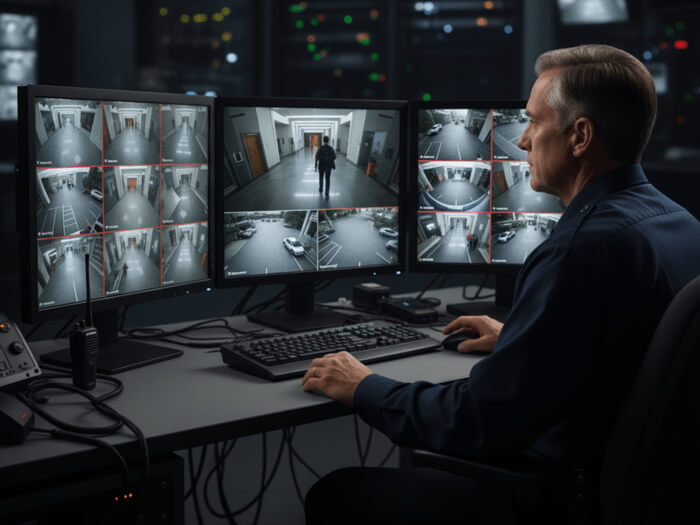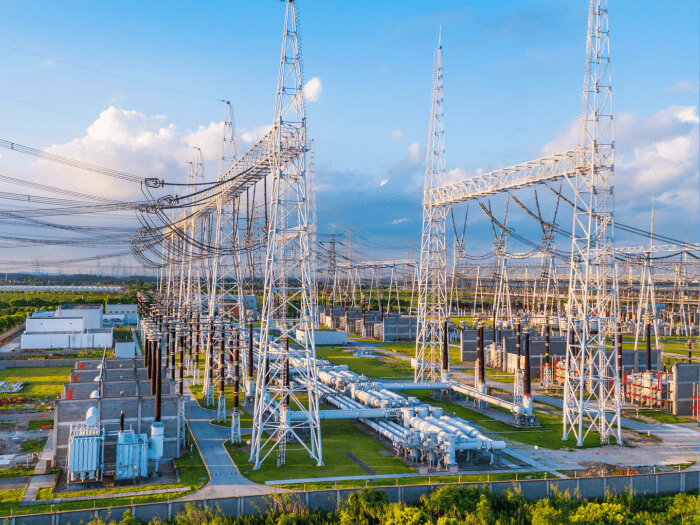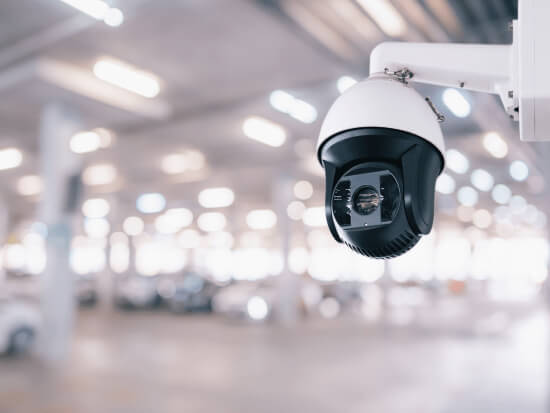
You’ve probably seen movies where government agencies, shadowy masterminds, or company security teams have instant access to surveillance cameras from around the world and can zoom in on any subject of interest by selecting from a bank of high-resolution monitors. Some of those remote-view scenarios come down to movie magic — but not all of them.
Behemoth companies, government agencies and militaries, and other large-scale users really have been able to view video remotely for a long time, but doing so was an expensive and involved project. Remote video transmission of analog signals is what let people around the world watch NASA’s lunar landing more than 50 years ago, after all.
Since then, and especially in the last decade, the cost and availability of distant surveillance viewing have changed rapidly and radically. In fact, for anyone considering a new or upgraded video surveillance system today, remote video viewing of some kind is a standard expectation. Even consumer-level security cameras typically allow viewing via cloud-based access — and in fact may allow nothing else.
What is remote video monitoring?
It’s helpful to distinguish between the ability to simply view a video at a distance and actual remote video monitoring.

Any time camera output is being watched or monitored by professionals at a substantial distance from the camera itself, it’s an instance of remote video monitoring. You could consider a video monitoring station located in the basement of a large office building or across an industrial complex from a production area to be a remote video monitoring system. Usually, though, the term is thought of as applying to observation from even greater distances, whether that means across town or across the country.
Making that possible in decades past usually involved dedicated physical networking links. It meant transmitting still frames at intervals via slow-scan video, or delivering analog camera output over a dedicated coaxial cable – obviously an expensive proposition. (In the same way, alarm systems often required a dedicated phone connection.)
Increasing resolution, rising capabilities, galloping bandwidth
Eventually, digital conversion hardware converted an analog camera’s output into a more easily transmitted digital signal, and sufficient bandwidth for high-resolution video became affordable. Both of these changes have made remote video monitoring a widely practical option. As a result, our expectations for capabilities, price, and availability have changed.
What would have required long, direct cable runs in a multi-site closed-circuit television system can now be effected across network links at any distance with no loss of signal fidelity. And the kind of remote viewing that modern infrastructure makes possible is qualitatively different.
What defines modern remote video monitoring? With Eagle Eye Remote Video Monitoring as an example, customers today can expect remote monitoring that is:
- Cloud mediated. No direct connection necessary between a customer site and a monitoring center.
- Permission-governed and cybersecure: Camera streams are shared only with authorized monitoring centers, and data is encrypted at all stages between the customer and remote monitors.
- Two-directional and proactive: Monitoring professionals aren’t limited to calling a manager or law enforcement when they see an incident; they can trigger recordings audible at the customer’s site to warn away thieves or trespassers, or issue live warnings. They can also trigger any available actions, such as contacting personnel on- or off-site through a range of communication options, or initiating a lockdown of the premises. And they may also have instant access to other recent video, or be able to instantly zoom in or point a camera in a different direction.
The importance of initial filtering
Perhaps most importantly: video surveillance today doesn’t require the kind of always-on human attention that it did even a decade ago. AI systems can recognize and categorize motion, capturing information such as license plates, clothing colors, or the number of people within a camera’s view. AI can also filter out events like motion caused by wind or animals. That way, remote observers can focus on incidents most likely to matter.
And crucially in an era of spiraling costs, that means you’re also not paying someone simply to watch mostly uneventful video. The AI is always on, and never takes the kind of breaks that humans need to keep their attention sharp. So when an AI-detected event does trigger an alert, a monitoring professional can see it with fresh eyes, rather than burdened by fatigue.
What are the benefits of remote video monitoring?
Here are five ways that remote video monitoring leverages cloud-centered video sharing capabilities for practical benefit to organizations of all kinds.
Reduced need for in-person guard staff. This saves on headcount costs and allows guards to be deployed more efficiently and safely. Far better to have a camera view of a dangerous situation than require on-site personnel to approach that situation up close.
Fast reactions. Monitoring professionals can evaluate events for instant action outside of normal business hours, when a manager might be sleeping, slowing the kind of reaction that would be possible during normal operations.
In-person safety: In the event of a dangerous situation, remote video monitoring allows people to be evacuated to safety without compromising situational awareness. For example, if AI detects a gun, trained staffers can immediately escalate the situation.
Scalability across sites: Remote monitoring for a new location or building can be readily spun up simply by adding remote video streams for monitoring.
Human eyes on distant sites: For large-scale industrial locations, remote monitoring makes it easy to keep an eye on complex installations.

How is remote video monitoring paid for?
Monitoring providers can use a variety of billing models. Remote video monitoring requires alignment with the actual monitoring provider, which may require an initial setup fee.
Ultimately, though, ongoing charges for monitoring will likely reflect a fixed minimum charge per month (or other time period), likely based on the number of cameras covered and specified service levels. Additionally, monitoring charges may reflect the number of incidents actually viewed and the actual time required to resolve and report them.
Customers may actually pay for the service through a security installer, rather than directly to a monitoring provider. In that case, especially, they may pay a predictable flat rate per month, rather than on a per-incident basis.
What to look for in an RVM provider?
Remote video monitoring providers vary in their pricing models and costs. End users and other decision makers should consider a potential vendor’s longevity and locality. A consistent business history is a good clue that they’ll be around in the future. And for regulatory reasons and familiarity with local law enforcement practices, as well as ease in following escalation plans, a provider in the same state, region, or country may be preferred. For specialized or highly regulated businesses, too, a provider with specifically trained personnel in that field may be worth pursuing.
Considering the benefits of remote video monitoring?

Timothy Lord has witnessed and written about IT security trends and the ongoing evolution of SaaS for more than 25 years.
Andra inlägg som kan intressera dig

Are there guns in the picture? How video surveillance helps
There have been many cases in which armed criminals have wounded or killed others, sometimes with no known motive, or as a result of personal grievances. Sadly, recent years have…
oktober 15, 2025
How surveillance video can squash swatting attacks
Imagine this. You're a police officer, and you've just been dispatched to a college campus because a 911 caller has reported several people carrying military-style rifles on campus, and said…
september 25, 2025
How your surveillance system helps your business — AI aside
Artificial intelligence dominates conversations about the future of security. At Eagle Eye Networks, we're proud to be at the forefront of this revolution, providing businesses with a complete AI-driven safety…
augusti 28, 2025




